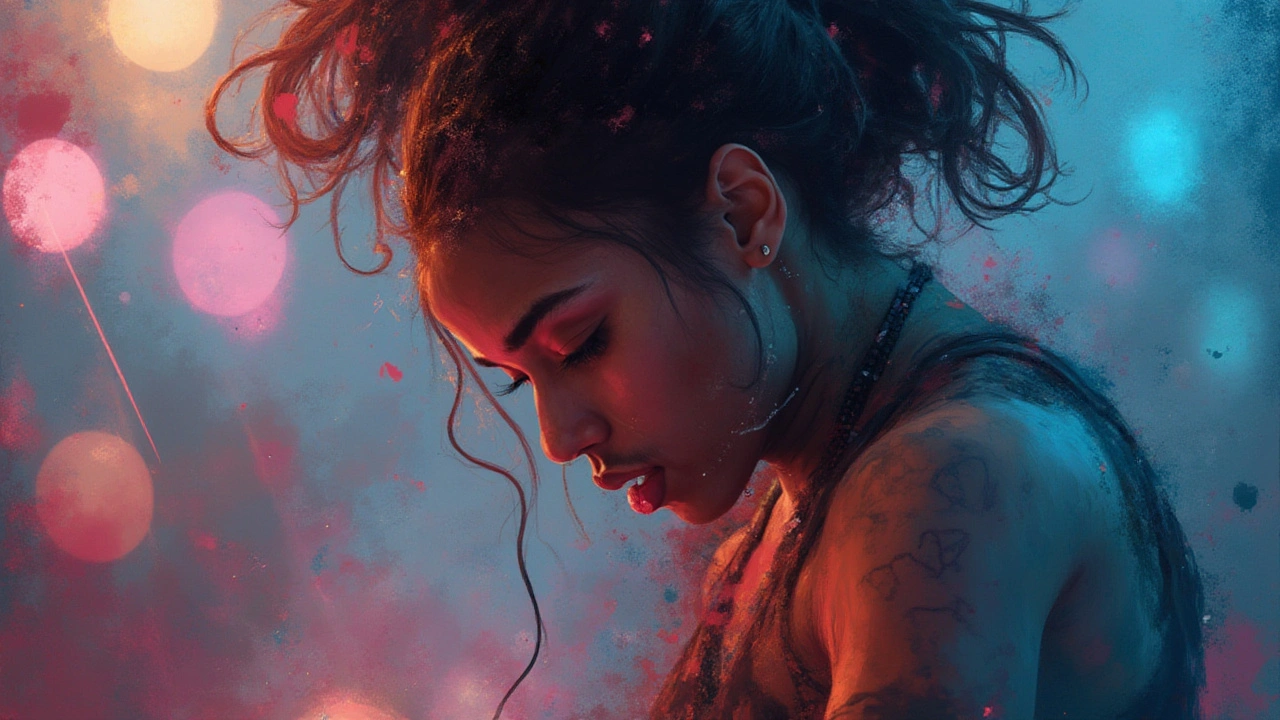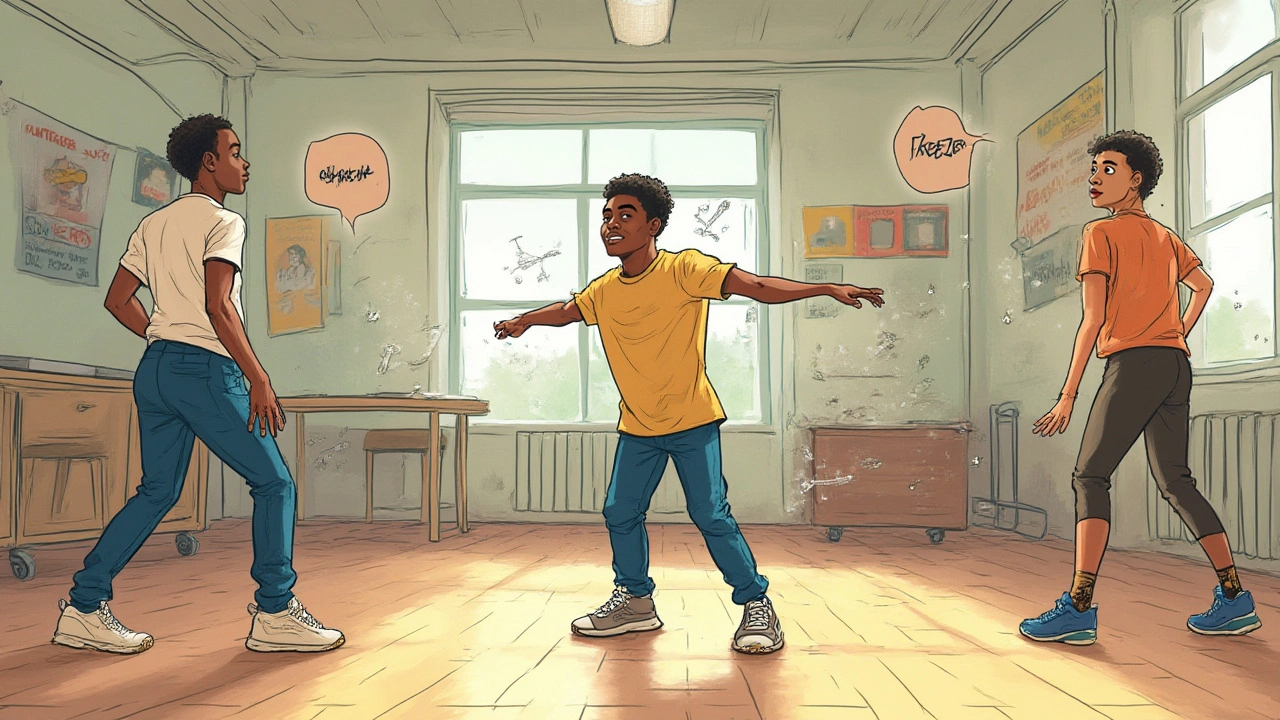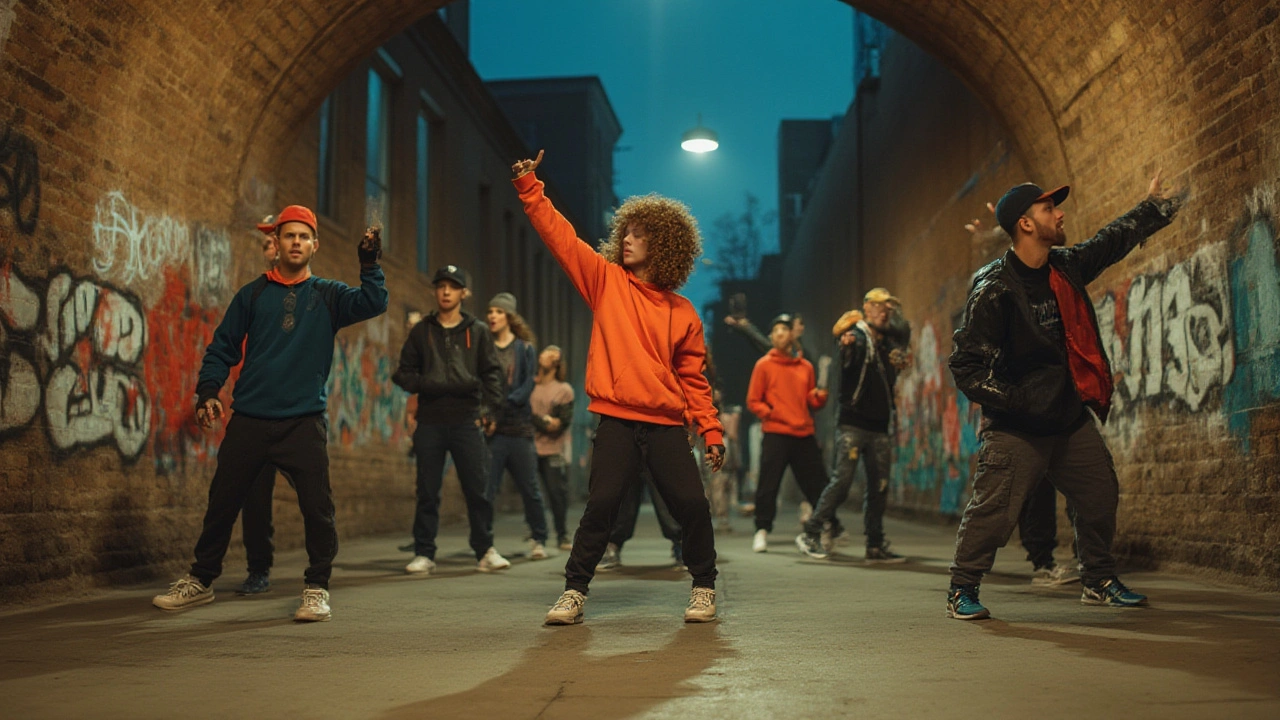Watch someone in a hoodie on a Brighton pier snap into a bone-breaking isolation in perfect sync with filthy bass drops, and you might blink twice. Dubstep dance looks otherworldly—and at the same time, like one of those things you’d want to try just for the thrill of controlling your body like it’s glitching in a video game. But what makes dubstep dance so different from other styles? Here’s something wild: the best dubstep dancers don’t just follow the music—they dissect it, making every little wobble and growl feel visible. Yeah, dubstep dance is a showcase of athleticism, but it’s also a game of minute details, connection, and raw, musical brainpower.
The Birth and Wave of Dubstep Dance
Dubstep itself kicked off in dark London clubs around 2001. The music? Heavy, syncopated drum patterns, crushing sub-bass, and unpredictable breakdowns that hit way harder than anything you’d heard in the garage or earlier UK electronic scenes. The dance? It grew up in parallel with the music—think of it as a street-smart cousin of popping, waving, tutting, and gliding with very particular attention to the sounds unique to dubstep’s DNA. You won’t find another style built so closely around sonic oddities: robotic stutters, rubbery bass, “rewind” effects, and abrupt silences.
The internet then turbocharged everything. In the late 2000s, a few YouTube videos went astronomically viral—Marquese ‘Nonstop’ Scott’s 2011 "Pumped Up Kicks" performance, for example, clocked hundreds of millions of views, turning bedroom dancers everywhere into students of his unreal, glitchy flows and gravity-defying control. All those isolated living room efforts, the countless playback loops, and the emergence of dancers from California to Kyiv laid the foundation for dubstep dance as a global thing. Brighton, Manchester, Berlin, Tokyo—any city with a nightlife scene caught the bug. Today, dubstep freestyle shows up in clubs, street battles, music videos (remember Skrillex's "First of the Year" clip?), and even commercials chasing an edge.
Musicality: The DNA of Dubstep Dance
Other styles move to a beat. Dubstep dance, though, picks apart every layer of a track like a surgeon. Let’s talk musicality—the heart of this craft. A pro dubstep dancer reacts to changes in texture and sound in real time. The “drop” comes in and suddenly everything shifts—their body explodes into high energy, or drops to the ground, or freezes while the song’s silence hangs in the air. Each hit, snare, hi-hat, or vocal chop gets mapped to a move: a chest pop for a bass wobble, a finger snap for a digital blip, a lightning-fast foot slide for a hi-hat run. This sharp musical awareness is what sets dubstep apart from more rhythmic, repetitive dance forms.
There’s an endless challenge wrapped in this style: no two dubstep tracks are alike, and tracks themselves constantly morph mid-song. You’re not just dancing ON the beat—you’re living inside the music. The best dancers use their entire bodies to echo the music’s “story”: arms become highways for sound to travel, knees flick quick for digital clicks, heads jerk and lock to match machine-gun rhythms. It’s like a video editor chopping footage—only you’re the footage, and the song is the scissors. Even pauses or “negative space” in the music become precious—it’s common to see top dancers hold a motionless pose for a second, just as the song drops out, then snap back to life right as the beat returns.
If you want to practice this, take your track, and listen in sections. Map moves to every sound you notice. It’s not about getting bigger or faster; it’s about clarity. If the song gets weird, your moves should too.

The Moves Behind the Magic: Dubstep Dance Vocab
Dive into a dubstep freestyle, and you’ll notice certain moves keep popping up—but always with a personal twist. Here are some essentials, along with tips for making them your own:
- Waving: This isn’t just for “the worm” at parties. Waves in dubstep are sharper, more segmented, and can run through any body limb—or all of them in sequence. It’s about showing energy flowing from one joint to the next. Want to look pro? Mess with the speed—switching between super slow-motion and hyper-speed always sells.
- Popping and Hitting: This is core to dubstep. Contract muscles for a split-second to create a “pop” or sharp stop, usually lined up with the hardest beats or robotic sounds. Pro tip: Try practicing hits with small props—scarves or pencils—until your arms learn to snap without losing flow.
- Tutting: Think angular, geometric hand and arm shapes that look like you’re building a robot out of invisible blocks. With dubstep, tutting is often used for the rapid-fire synth sounds or stuttered beats. You can freestyle or build classic patterns, just make sure it syncs to the music’s quirks.
- Gliding and Sliding: Footwork gets overlooked in dubstep, but skating across the floor in sync with sweeping sounds is hypnotic. Use socks on wooden floors or lightweight shoes for the best effect.
- Isolations: Move one body part totally independently of the rest—think moving your head in a slow circle while your torso stays frozen. When a track modulates (shifts in pitch or filter), throw in an isolation for dramatic flair.
- Body Vibrations: Quick shakes—almost like shivers—work wonders for buzzy sounds. It’s harder than it looks. Try “locking” into it and then releasing as the music lets up.
Every serious dubstep dancer keeps layering these techniques, blending them in and out, riffing off whatever the music throws their way. Want your moves not to look stale? Record yourself, choose a tricky part of your favourite track, and break it down, beat by beat, until each pop and lock lines up with the sounds.
Physicality and Training: The Demands on the Body
Dubstep might not demand the crazy flexibility of ballet, but make no mistake—your quads, core, and coordination will get a monster workout. Repeated isolations and hits can leave you as wiped as a weightlifter, especially if you’re gunning for those drawn-out freestyle rounds at a jam or battle. According to a 2024 university study in Bristol, the average freestyle session of dubstep dance (just 20 minutes) burns roughly 200-250 calories, right behind Zumba and high-paced hip-hop. It’s also demanding on your balance—you’re often shifting weight between toes and heels in the blink of an eye.
Want to build stamina? Here’s a quick circuit you can try:
- 1 minute of high-knee running in place for endurance.
- 2 minutes of slow-motion walking (exaggerate and balance) to train muscle control.
- 30 seconds on each leg for gliding drills—slide forward, pause, slide back, all in slow motion.
- Isolation sequence: neck rolls, shoulder shrugs, chest pops, and wrist turns for 2 minutes.
- Try holding a deep squat as you perform spine waves to build core and leg stability—aim for a full song!
To avoid injury, warming up is a must, especially for wrists, ankles, and neck. I once bust my ankle gliding on dew-slick Brighton pavement—lesson learned! Focus on flexibility through dynamic stretches. And, for pro-level control, yoga or Pilates really help—these styles drill deep stabilizer muscles and increase range of motion. Dancers who cross-train usually see their lines and balances sharpen up in a matter of weeks.
Muscle memory is key in dubstep. If you practice the same sequence daily, you’ll find your body reacts almost automatically to certain musical cues. This frees your brain to improvise—so you stop “thinking” and start just feeling the music.

Killer Tips and Insights for Leveling Up
Trying to break through a plateau? Or maybe you’re eyeing your first street battle or want to light up social media with something original. Here’s what actually works, beyond the usual “just practice” advice.
- Use Mirrors — But Not Always: Practicing in front of a mirror helps you spot which moves look awkward or out of sync. But eventually, turn away and train by feel—let your ears take charge. This is where your *musicality* (dubstep dance) really comes to life.
- Record and Slow Down: Film your freestyles, then watch back at half-speed. You’ll see blips you never noticed. Pinpoint the milliseconds where you’re out of sync, then drill just those moments.
- Switch Up the Music: Practicing only to one song locks you in a box. Rotate between classic dubstep (think old Skream or Benga), bass-heavy grime, and even experimental electronica. This’ll force your creativity and responsiveness.
- Watch the Greats, But Don’t Copy: Study videos of legends like Nonstop, Dytto, or Poppin John—but use their routines to inspire your own twists, not clone every move. Focus on how they build tension, surprise the audience, or “hit” unexpected beats. Emulate that mindset, not just their footwork.
- Train With a Friend: Nothing brings out the best—or the wildest—in your moves like a freestyle battle. Even better, swap songs mid-set and challenge each other to respond in real time. The pressure jumpstarts your creativity and adaptability.
- Join Local Jams: In cities like Brighton, regular dubstep and street dance events pop up in warehouses, skateparks, and nightclubs. Showing up is half the battle for both inspiration and confidence. Even watching from the sidelines sharpens your instincts.
Need a quick inspiration boost? Here’s a comparison of popular dubstep moves, their difficulty, and what part of the music they usually shine on:
| Move | Difficulty | Best Musical Moment |
|---|---|---|
| Waving | Intermediate | Basslines, slow builds |
| Popping/Hitting | Easy to advanced | Kicks, snares, sudden effects |
| Tutting | Advanced | Synth runs, rapid-fire beats |
| Isolations | Advanced | Silent breaks, filter sweeps |
| Vibrations | Intermediate | Buzzy sounds, tension moments |
| Gliding/Sliding | Intermediate | Sweeping instrumentals, intros |
Experiment with the table—try matching each move to their ‘ideal’ musical moment next time you practice. You’ll see your connection to the track skyrocket.
Dubstep’s not just about memorizing tricks—it’s a way to throw your own quirks at the wall and see what sticks. Whether you’re grooving on a rainy Brighton street or battling on TikTok, that blend of musicality and madness is what keeps dubstep dance so endlessly addictive.

